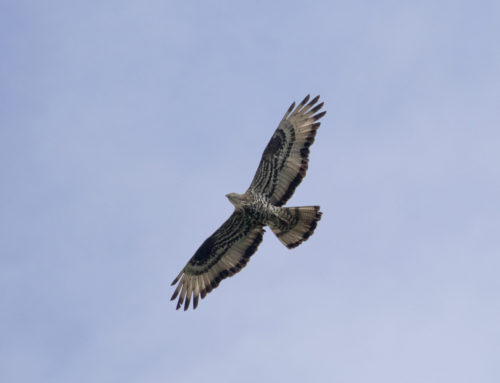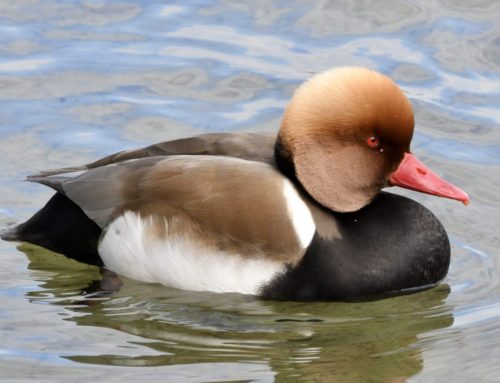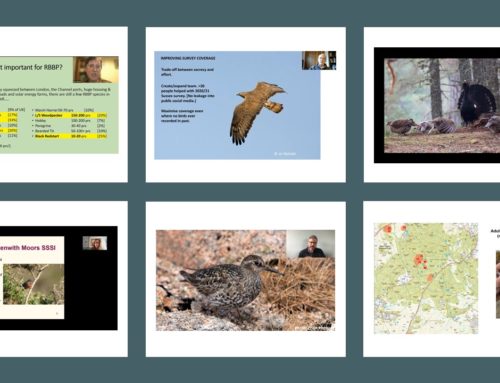Using BirdTrack to record breeding evidence of rare breeding birds

Marsh Warbler by Peter Wilson
A cacophony of warbling notes filled with the calls of Bee-eater, Common Tern, alarm calling Blackbird, and the chatter of a singing Swallow burst from a patch of nettles as a Marsh Warbler proclaims his presence. What to do now? Sit back and absorb this master of mimicry? Get the news out so others can enjoy your find? Or just pat yourself on the back and head off in search of the next ‘good’ bird? The default reaction for many is to let others know so they can come and listen too, but before that perhaps we should all take a step back and assess the situation first. Britain has a number of rare and scarce breeding species and many of these are susceptible to disturbance, intentional or not. Each time we are lucky enough to find one of these species during the breeding season we should ask ourselves what is in the best interests of the bird? There are a number of things to consider, but one of the most overriding questions to take into account is whether the bird is in an area where breeding could occur? However unlikely that may seem, if the answer is yes, then not releasing news and looking for further signs of breeding is the best course of action.
BirdTrack has long had a close working relationship with the Rare Breeding Birds Panel and we have always been keen to encourage the users of BirdTrack to record breeding evidence with their records. This not only helps the Rare Breeding Birds Panel but also county bird recorders who find these types of records extremely helpful when it comes to compiling their annual county bird reports. The types of breeding evidence you can record in BirdTrack fall into three categories: possible breeding, probable breeding and confirmed breeding. For example, a bird in suitable breeding habitat or a singing male would denote a possible breeding record; a pair in suitable breeding habitat, or better still nest building or showing agitated behaviour around a likely nest site, would be probable breeding. And the highest evidence, such as a nest with young or seeing an adult carrying a faecal sac or food, would constitute confirmed breeding. The best practice is to record the highest breeding evidence that you observe and whilst the BirdTrack app at the moment only facilitates the single entry of breeding evidence for a given species record, the BirdTrack website allows multiple entries of breeding evidence to be recorded using the ‘optional’ tab next to each entry on the species entry page. Both the website and mobile app also allow the pinpointing of a record and this is especially useful in marking the song posts of singing males or a nest site; multiple pinpoints can be added should you find more than one nest.

List of breeding evidence codes from the BirdTrack mobile phone app

Entering breeding evidence and other details using the BirdTrack website
During the breeding season, unlike some other bird recording systems, BirdTrack automatically marks records of many species covered by the RBBP as ‘Sensitive’ and these records are not shown on any publicly-viewable maps; only you can see the records you have entered for these species together with the local recorders who have special access to the records for inclusion in county reports, and for compiling their annual submission to the RBBP. You can find out more about the BirdTrack rare species policy here.
It is worth familiarising yourself with the list of species covered by the RBBP, it is not all Marsh Warblers and Spotted Crakes; there are some species that you might not regard as rare breeders, and it is these species that are often under-recorded when it comes to breeding evidence. Ducks are a good example, Wigeon, Shoveler, and Pintail may be familiar to many of us during the winter months, but when encountering a bird in late April or early May it is always worth adding any breeding evidence to such sightings and consider watching the bird(s) for a while to see if better evidence of breeding can be obtained, such as visiting a potential nest site. Repeat visits through the breeding season could be rewarded by the confirmation of breeding with, for example, recently fledged young birds following an adult bird. These repeat visits can be invaluable for secretive species where a singing male may be the only clue to breeding. Species such as Marsh Warbler can be obvious when they first arrive at a site as they blast out their song, but once they have found a mate, they can be difficult to monitor and proving a breeding attempt can be very difficult. Again, repeat visits later in the year could help confirm breeding, and by adding these records to BirdTrack with breeding evidence you can help county recorders and the RBBP monitor the populations of scarce and rare breeding birds across Britain.
Scott Mayson, BTO






